Hudson AE577, County Louth, September 1941
On the 27th of September 1941, three men of Ferry Command,
Royal Air Force lost their lives in a tragic crash on the
slopes above Jenkinstown in County Louth, Ireland.
Early on that morning, an aircraft was observed flying near
Waterford, it made its way up the country until it landed at
Baldonnel aerodrome outside Dublin.
The crew of three reported they were running short of fuel and
had flown from Canada. Having rested a short time, they were
given more fuel and upon receiving agreement from the Department
of External Affairs of the Irish Government, the aircraft
departed. Irish Air Corps personnel reviewed the intended course
to Aldergrove in Northern Ireland, and Fl/Lt Dubuc reported that
though they had had a bad flight so far he was anxious to
continue on. No more than 30 to 40 minutes after take off they
crashed into the fog and cloud obscured slopes in Jenkinstown.
All three airmen were killed in the crash and local people
coming to their aid could do nothing for them.
The men's remains were taken to Dundalk Army barracks where
they were passed into the control of RAF officers and left the
barracks under a full military honour guard from the local Irish
Army garrison. An Irish Air Corps Salvage party under Lt.
Teague, completed a clean up operation on the site by Tuesday
30th September. The crash location was described in the archive
files as:
“The aircraft crashed at AUGHAMEEN
which is situated approx. 2 ˝ miles NE of Belurgan Station
on the road to OMEATH from Dundalk, Bellurgan Station being
on the north Shore of Dundalk Bay on the road from Dundalk
to Greenore. The crash was on the side of a hill at about
800' above sea level.”
The crash in reality occurred in the townland of Jenkinstown,
close to the administrative border with Aghameen
The crew consisted of Royal Canadian Air Force pilot, Louis R Dubuc, age 34, Royal Air Force Volunteer Reserve navigator, Frederick J Goodwin, age 20 and a civilian Radio Operator of Ferry Command, Samuel R Kenny, age 22. Details of the crash circumstances are below.
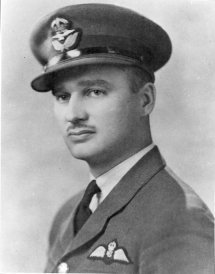 Flight Lieutenant (Pilot) Louis
Romeo Dubuc C/1520, was born in 1907 XXXX, He had
served as a pilot with the Royal Canadian Mounted Police (RCMP)
from 1931. He is remembered as the first licensed pilot from
Fort Sasketchwan in Canada. A book was written about him in
2005, “Fort Saskatchewan's First Pilot : Louis Romeo Dubuc, June
10, 1907 to September 27, 1941” by Denise Callender. He is
remembered by his modern day RCMP colleagues, veteran Jack
Hickman visited his grave in May 2009. Louis had been married in
early 1939 in Quebec to Margaret Hewson. His parents were Evelyn
and William Dubuc.
Flight Lieutenant (Pilot) Louis
Romeo Dubuc C/1520, was born in 1907 XXXX, He had
served as a pilot with the Royal Canadian Mounted Police (RCMP)
from 1931. He is remembered as the first licensed pilot from
Fort Sasketchwan in Canada. A book was written about him in
2005, “Fort Saskatchewan's First Pilot : Louis Romeo Dubuc, June
10, 1907 to September 27, 1941” by Denise Callender. He is
remembered by his modern day RCMP colleagues, veteran Jack
Hickman visited his grave in May 2009. Louis had been married in
early 1939 in Quebec to Margaret Hewson. His parents were Evelyn
and William Dubuc.
 The RCMP Quarterly magazine published this
obituary for him in late 1941.
The RCMP Quarterly magazine published this
obituary for him in late 1941.
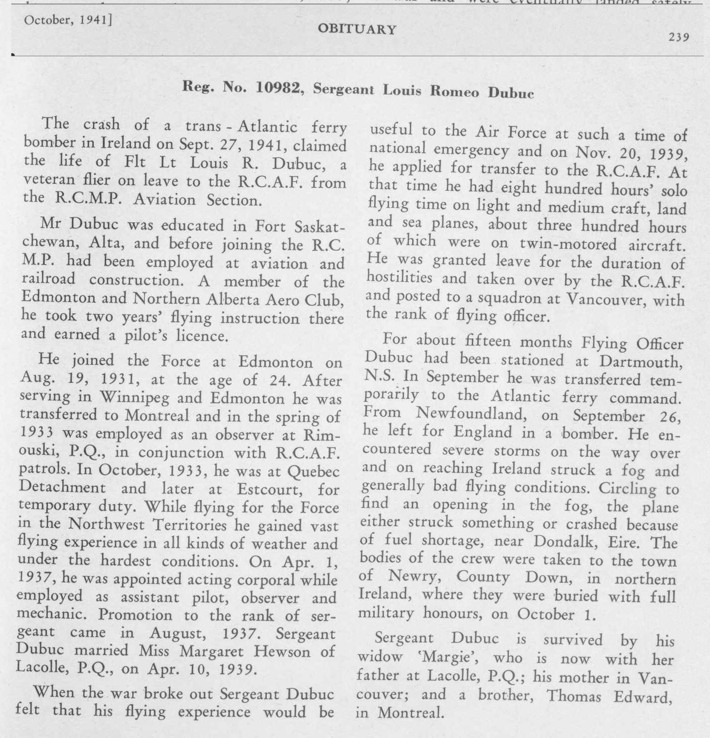
On November 9th, 2005, the Guelph Mercury newspaper from town of Guelph in Canada, carried a newspaper article about the visit of Louis' nephew Bill Dubuc to Northern Ireland in 2005. Bill had researched his late uncles war service and took the opportunity to visit his grave in Newry. Bill Dubuc installed a personnel memorial on the grave. Louis' brother died in 1963. The text of the 2005 article is presented at the end of this report. The cemetery in 2011 now contains two wall mounted maps showing plot numbers and the names buried therein. Dubuc and Kenny are buried in plot 783 per this new mapping.
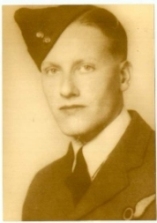 Sergeant
(Observer) Frederick James Goodwin 1162826 was the son of
Lavinia and Frederick James Goodwin of Smethwick in
Staffordshire. He was born in January of 1921 and by the
time of the 1939 census, he was working as Drawing Office Report
Clerk in an Aeronuatical firm of some kind.
Sergeant
(Observer) Frederick James Goodwin 1162826 was the son of
Lavinia and Frederick James Goodwin of Smethwick in
Staffordshire. He was born in January of 1921 and by the
time of the 1939 census, he was working as Drawing Office Report
Clerk in an Aeronuatical firm of some kind.
He had trained in Canada as evidenced by the details he gave to
the Irish military on the day of the crash and those that were
later found on his body. The 1 Air Navigation School (ANS) was
based at Rivers, Manitoba. It later became the Central
Navigation School when it amalgamated with 2 ANS in May 1942.
Fred was the navigator on the aircraft, at that time this role
as named 'Observer' from pre-war practice.
 While in
Canada he met and married Adeline Peacock on the 11th of
September 1941. Fred's cousin Yvonne Lay recounts that he had
written to his parents telling them he had a surprise to tell
them. That news was that he had married. Sadly, he would die in
the crash of AE577 before making it home to tell them. Adeline
remarried again but stayed in contact with the Goodwin's and
visited Fred's sister after the war. The photo at left shows
Frederick with his new wife.
While in
Canada he met and married Adeline Peacock on the 11th of
September 1941. Fred's cousin Yvonne Lay recounts that he had
written to his parents telling them he had a surprise to tell
them. That news was that he had married. Sadly, he would die in
the crash of AE577 before making it home to tell them. Adeline
remarried again but stayed in contact with the Goodwin's and
visited Fred's sister after the war. The photo at left shows
Frederick with his new wife.
R.A.F. WREATH
At airman's funeral
A sergeant of the Royal Air Force carried a wreath
representing a propeller at the funeral of Sergt. - Observer
Frederick James Goodwin as the coffin was borne into St.
Matthew's Church, Smethwick, on the shoulders of R.A.F. men
to-day.
Sergt. Goodwin was the only son of the verger of St.
Matthew's Church. He joined the R.A.F. in July, 1940. He
finished his training in Canada and flew the Atlantic. He
was 20 years of age.
Fred Goodwin was brought home to his native Smethwick where he lies at rest in Smethwick (Uplands) Cemetery. His headstone inscription reads: Our Beloved Son : At going down of the sun we will remember them
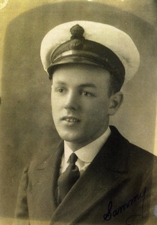 Samuel
Raymond Kenny was born in November 1918 in Nova Scotia,
Son of Calvin David and Annie Marie Kenny, of Wolfville. He
attended school in Sydney Grand Pre, N.S. Having attended radio
school in Halifax, Sam went on to serve with the RCMP also.
Samuel
Raymond Kenny was born in November 1918 in Nova Scotia,
Son of Calvin David and Annie Marie Kenny, of Wolfville. He
attended school in Sydney Grand Pre, N.S. Having attended radio
school in Halifax, Sam went on to serve with the RCMP also.
In 1941 he joined the ferry operations as a Radio Operator. It
was due to a shortage of trained radio operators on the Canadian
side of the Ferry operations that many telegraph employees of
the Canadian railways and elsewhere were recruited as civilian
radio operators for the dangerous transoceanic flights.

Being Canadian, both Fl/Lt Dubuc and R/O Kenny were destined to be laid to rest near where they fell and so, their bodies were buried side by side in the graveyard of the Old Catholic Chapel in Newry in Northern Ireland, just a few miles across the border they had so desperately sought to cross that September day.
The graves of Louis Dubuc and Samuel Kenny. New ground. Sec. J. Grave 16. (Plot 783 per Cemetery Map in the graveyard)
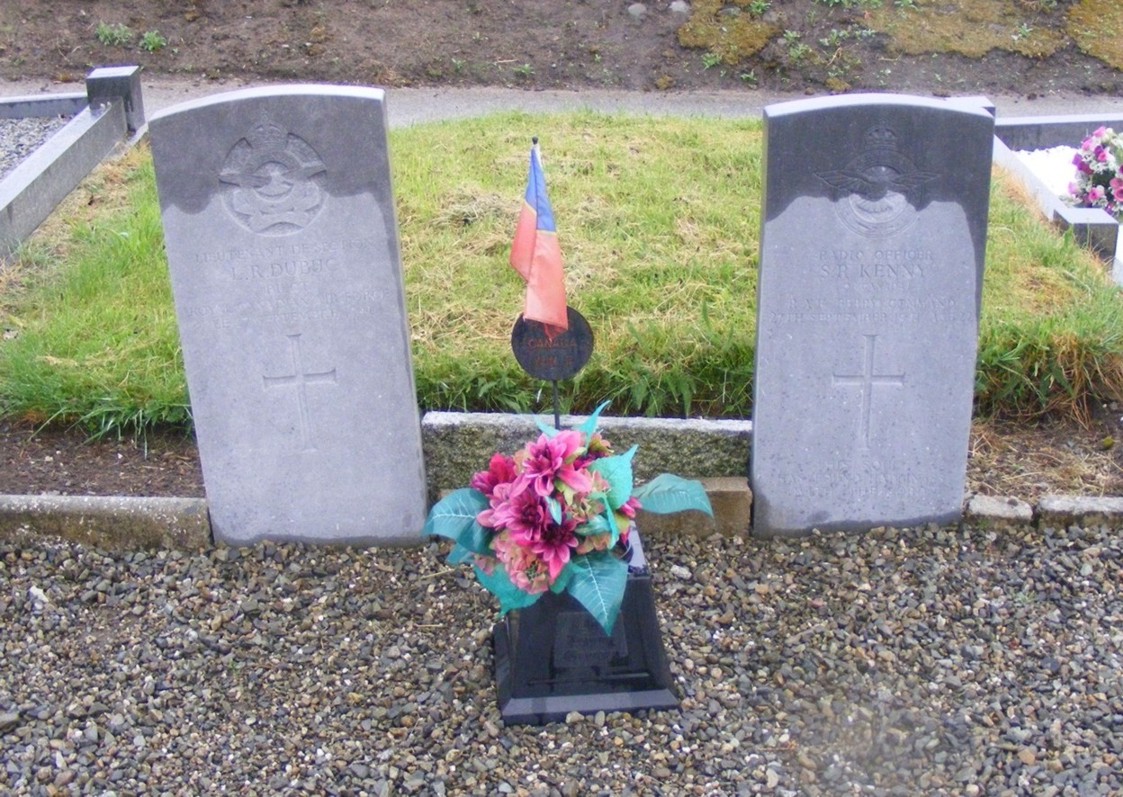
It is worth remembering that on the same day, three more Ferry Command airmen went missing over the Atlantic, never to receive a burial place.
F/O Harold Wilson Oldham C/2397 RCAF, Sgt William Ronald Lance R/70035 RCAF and Cyril Harvey Small Civilian Radio Operator
were lost when Hudson AM940 went missing. The three men's names
are recorded on the Ottawa Memorial. Small's name was not
recorded on the memorial until 2021.
A visit to Jenkinstown, October 2011.
The compiler of this report made a visit to the Jenkinstown –
Aghameen area in early October 2011. The first house visited was
luckily that of Owen Hynes who was able to point out the
location of where Patrick McGeown and the Duffy's lived and the
general direction of the crash site. He directed me to a
neighbour, John Mill's who was eleven years old at the time of
the crash. John's wife kindly called him in from the farm and he
straight away offered to show me where he remembered the crash
occurred. We drove up the road to Patrick McGeown's now
abandoned home and John was able to point up a point on the hill
side where he recalled the crash occurred.
In talking to me, John recalled that the crash had occurred late
on in the year, it wasn't the summer time to his recollection.
He remembers that the fog was very thick that day, such that we
might have difficulty seeing my car we were standing next too.
He was helping his three brothers to clean out the family horse
drawn threshing mill in a shed at the back of the family home.
He likened the sound of the crash to a load of tar barrels being
thrown onto rocks. His mother would not let her boys up the
mountainside amid all the commotion of trucks and army men. He
recalled that one of the men, he thought from Nova Scotia was
prayed for at mass locally. John remembered also the even
greater commotion in the locality not six months later when a
large British Bomber crashed across the valley on Slieve na
Glough. His mother tried to bring some of her sons up to visit
the crash site but along the way they met a soldier who, when
John's mother told him she planned to visit the site, told her
it was no place for children. Sixteen men died in that crash in
a lonely hollow not far from the site of Hudson AE577's crash.
John also knew of the third crash in the area, that of the
single engine American aircraft in Dawestown. A single American
pilot was killed in that crash. John felt that that that crash
was little talked about. Thanks to the efforts of a number of
local people including Noel Roddy, the memory of the Liberator
crash in March 1942 is well remembered by locals, but the crash
of AE577 and the Mustang fighter in 1944 appear to be less well
known.
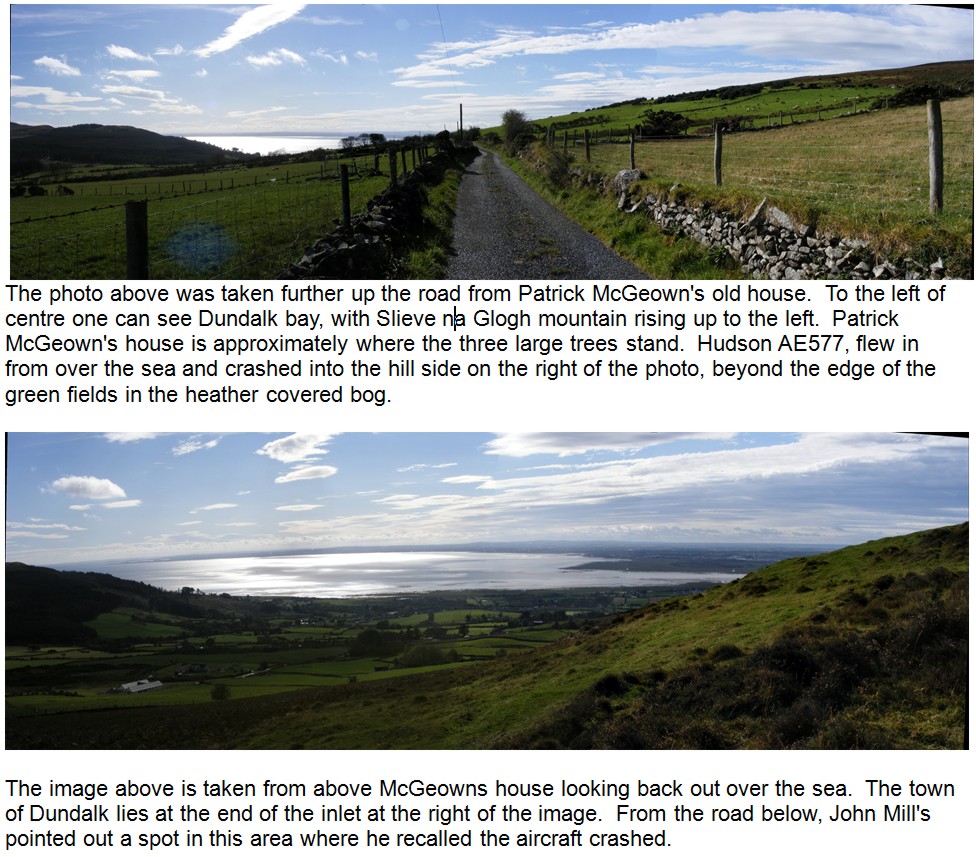
Irish Military Archives Files
Details of the report can be found in the files of the Irish
Military Archives in Cahal Brugha Barracks, Rathmines, Dublin 6.
The following text appears in a one page memorandum in the Irish
Army Archives, it is hand dated 29 September 1941:
“A Lockhed Hudson a/c entered our
territory at Fethard on Sea, Co. Waterford at 08.35hrs on
27th September 1941, flew north over Glin, Borris, Carlow,
Baltinglass, Ballymore Eustace to Baldonnel where it circled
and eventually landed at 09.24 hrs. The aircraft proved to
be unarmed and bore an American* registration no. A.E. 577.
There were three persons on board.
C.1520 Capt. L R Dubuc RCAF
1162826 Sergt Observer F G Goodwin RCAF Barrack no. 6, Wing
A. No. 1 Nav School Manitoba, Canada
Mr. S R Kenny Wireless Operator (Dubuc and Goodwin were in
Uniform).
The landing was stated to have been due to fuel shortage.
The matter of the disposal of the plane and crew was
discussed with the Department of External Affairs and it was
eventually decided that the aircraft should be permitted to
leave. After receiving additional fuel the aircraft took off
at 13.20 hrs and was subsequently reported from Ardee
(13.42) Castlebellingham (13.47) Culleville (13.57). The
machine would appear to have lost its bearings for she would
appear to have been moving southwards when at approximately
14.10 hrs she crashed in the mountains at Aughmeen,
Jenkinstown, near Dundalk. The occupants were killed and the
machine was completely wrecked.
The bodies were subsequently removed to Dundalk military
barracks, arriving at 20.00 hrs on the same evening. (27th
September).
After consultation with Department of External Affairs the
Assistant chief of Staff directed that the bodies together
with all effects, papers, records, etc should be handed over
to the British military authorities. Subsequently, on the
28th September, two RAF officers, Ft. Lieut. Day (Belfast)
and Lieut Ray (Newry) proceeded to Dundalk in mufti and took
over the bodies and effects etc. The party left Dundalk
barracks in an Ambulance at about 16.30 hrs on Sunday,
military honours being paid to the bodies on leaving the
barracks. The local Garda Superintendent accompanied the
ambulance as far as the six counties border.”
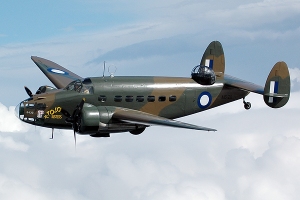
Note on the above memo:
* This is of course a British Air Ministry serial number, one of
173 Hudsons ordered in the batch AE485-AE657.
The reported sightings of aircraft mentioned above would indicate the aircraft flew west inland towards the village of Cullaville across the border near the town of Crossmaglen. The few witness statements seem to indicate that the aircraft came in from over the sea. A Garda report dated 30th September certainly indicates that the aircraft was heard before the crash to have been circling the bay outside Dundalk (See below).
A report prepared on September 29th, 1941 by Col. P A Mulcahy,
commander of the Irish Air Corps detailed some of the aspects of
the event. Those on board gave their names and addresses as:
Capt. L R Dubuc,Elmwood Appartments No.
7, South St Halifax NS.
S R Kenny, Grand Parade NS
F G Goodwin, 61 Poplar Street, Smithwich, Staffordshire
(Note: Sgt. Goodwin came from Smethwick, the spelling above is
that recorded by the Irish Military).
Having landed at 09.35 hrs, the crew were given refreshments, a wash up and breakfast and then rested until instruction was received from the Department of External Affairs at 12.40 hrs. Dubuc agreed to fly to Aldergrove in Northern Ireland upon being requested. He took on a further 75 gallons of fuel to ensure sufficient fuel for the journey.
Prior to take off, a Capt. Devoy of the Irish air corps went
over the course with both Dubuc and Goodwin.
Col. Mulcahy reported the following:
“Capt. Dubuc was informed he could use
his wireless when airborne and could weather and D.F. If
required from Prestwick or any other station he contacted.
He informed me that although he had had a bad trip across,
he was quite fit to fly for another couple of hours and he
was anxious to get away as soon as possible.
He took off at 13.19 hours.
I am informed that this machine crashed at Jenkinstown at
about 4.07 hours. A further report will be submitted in due
course.”
A Garda (Irish Police) report dated 30th September 1941
reported:
“Saturday evening the 27/9/41 was very
misty with a moderate S.W. Wind, visibility was nil.
Outlines of objects on the mountainside could only be seen
at about 25 yards.
The plane was heard to be circling around Bellurgan and over Dundalk bay at a low altitude at about 2 p.m. Nothing more was heard by any of the residents there but the roar of the engines. The plane then crashed inland at Rockmarshal on a north by west course.
Another Garda report dated 4th October
1941 recorded the men’s details as:
“Pilot Officer L R Dubuc, Royal Canadian Air Force; born
at Fort Saskatchewan
Radio Operator Samuel Raymond Kenny, born Louisburg, Nova
Scotia 26.11.1918
Sergeant Observer F J Goodwin, No. 11628266, Barrracks No.
6, Wing A, No. 1 Air Navigation School, Rivers, Manitoba.
In the same file the following Garda report titled 'Crash of
British bomber A577 at Aghameen, Dundalk' dated October 4th goes
on to say that Garda T S McDonagh arrived on the scene at about
4pm. The aircraft was still burning and he helped LSF men** put
it out. He then went for medical doctor in case one was needed.
He ascertained the aircraft crashed at 2:30 and he reported that
“the ceiling at that time was 500 feet
and above that visibility was not more than 60 ft”.
Note: **LSF = Local Security Force
The file contains copies of the witness statements given by local men and women some of whom were first on the scene. Patrick McGeown and Hugh Duffy, along with James Duffy of Jenkinstown heard and seen the aircraft pass over in the murk and crash nearby. Patrick and Hugh got to the aircraft and finding men among the wreckage took two of the men from the aircraft but could see that they were already dead. The local priest Father Callan was called to the scene in due course.
Patrick McGeown's statement on September 29th reads:
“I reside at Jenkinstown, Dundalk. On
Saturday the 27/9/41 I was standing out in my field at a
fnece. It was very misty, it was very close I hardly ever
saw it thicker. I could only see about 10 perches. I was
standing listening to the noise of a plane. The noise was
very loud but it did not seem so low. As I was standing
looking in the direction from which the noise of the plane
was coming I saw a red flash in the fog. It was coming
straight for me and when I saw that there was something
wrong I ran a few perches out of the way. I ran west the
plane passed me about 10 feet off the ground. I could see
all the plane as she passed me. She was all red in front,
flames were leaving the sides, smoke was coming out of her
all over. I would swear that the red appearance on the front
of the planes was fire and that the plane was all afire
before she hit the mountain. From where I was standing to
where the plane hit the ground is about 500 yards. It was
about 2.p.m I cannot fix the time. I was only judging by the
time my daughter left the house. She remarked when leaving
it “it is 1.p.m, I will go to get my husband's dinner”. I
thought the plane had crashed further up the mountain, so I
went out to the road to look for help. I met James Duffy and
Hugh Duffy of Jenkinstown. We all went to the mountain to
search for the plane. We observed the flames and when we got
near it James Duffy said mind the bombs and ran away. I told
them to come on that we might save someone. Hugh Duffy
followed me and we pulled two of the men away from the fire.
When I found that they were dead I was all in”
Other witness statements from people living closer to the coast at Jenkinstown all indicate and aircraft coming in from the sea and flying very low. The statements from some also indicate that they felt the aircraft was experiencing some engines problems.
Captain P Fitzpatrick of the G2 branch, Eastern command, Irish
Army filed a report on 30 September which included the following
information:
“At approximately 16.00 hrs on Sunday
the bodies of the dead airmen were handed over the the two
British Officers at Dundalk Military Barracks, Flight Lt Day
RAF Belfast and Lt. Ray of Newry. After the handing over of
the bodies Lt. Day asked permission to visit the scene of
the crash to see if he could arrive at any solution
regarding the crash. At 16.30 hrs in company with Lt.
Teague, Baldonnel, we brought Lt. Day to where the crash
occurred, and it is his belief that the pilot of the machine
must have fallen asleep at the controls. On our return to
Dundalk Military Barracks I handed over, as instructed by
Colonel Bryan, all documents and private property of the
deceased airmen. The cortege left barracks at approximately
18.00 hrs, military honours being paid."
The Irish Air Corps salvage team sent to recover the aircraft had to truck the wreckage from the hill side and into Dundalk barracks where it was loaded onto low loaders for movement onto Baldonnel. They were critical of the hundreds of civilians who visited the scene and hindered them in their work.
A hand written memo by Teague, the Air Corps Salvage officer
contains his interpretation of the crash event and the
disposition of the wreckage. It reads in part:
“Immediately before crashing the
aircraft seems to have been flying in a northerly direction
to gauge from the first marks on the ground. These marks are
three grooves approximately made by the engines and
fuselage. The slope of the hill is fairly steep and these
marks seem to have been made when the aircraft was banking
steeply. There is practically no wreckage from the aircraft
at this point and for about 150 yards further on. The
greater part of the aircraft lay 150 years further on in the
direction of flight. The port wing lay right side up but
with its leading edge towards the south, the starboard plane
lay upside down, root about 5 yards N.E. of root of port
plane, and tip towards the north. The tail from the rear of
the power turret position back lay on the starboard wing
with the tail wheel north and ???? a ??? right side up. the
port engine lay 50 yards further north and the starboard
engine lay about 5 yards east of the port plane on a bank
about 5 feet high. All the fuselage back to the turret was
burnt out between the roots of the two wings. Some pieces of
the ????? and equipment from the aircraft were scattered in
an area about 15 yards all around the wreck.”
Service Record of L R Dubuc:
This file contains reports from Officers about the circumstances
of the crash and the aftermath. The following was recorded of
the funerals of Dubuc and Kenny.
“On 1/10/41, F/O L. Keraher, together with an escort party of of 40 airmen ad N.C.O.'s proceeded to the 5th Welsh Division Barracks at Newry, where full arrangements of the funeral procession were made by the C.O. of that unit. The funeral commenced at 1500 hours from the Daisy Hill Hospital, and included in the party were a contingent of the Royal Ulster Constabulary. The whole arrangements were carried out with great precision and solemnity, and full military honours were given at the burial.”
Royal Air Force Museum, Hendon
Yvonne Lay was able to provide a copy of the Air Ministry Form
1180 from the RAF Museum Hendon Archives. A transcription of
part of the form provides the following information, although
some words are difficult to decipher.
INSTRUMENTS. Vis. Barely 20 yds Flew
into mountainside when a/c had T/O after a successful F.
Land in Eire – due to lost weather + U/S auto pilot, ?????
had iced up on Atlantic but picked up again. Defect in the
Vacuum relief Valve of the Sperry Auto pilot may have been
contrib? If not primary cause of being lost. After T.O from
FL & having instruments defective may have decided to
fly low ???, then climb into clouds.
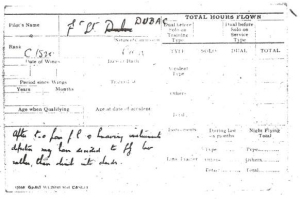 |
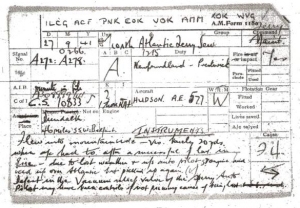 |
| The Air Ministry Form 1180 for this aircraft. | |
The Canadian Globe and Mail newspaper of October 2nd 1941
Carried this news article: 
The Globe and Mail newspaper caused a diplomatic incident in the
aftermath of the crash of AE577. On December 12th, 1941, it
published the following article:
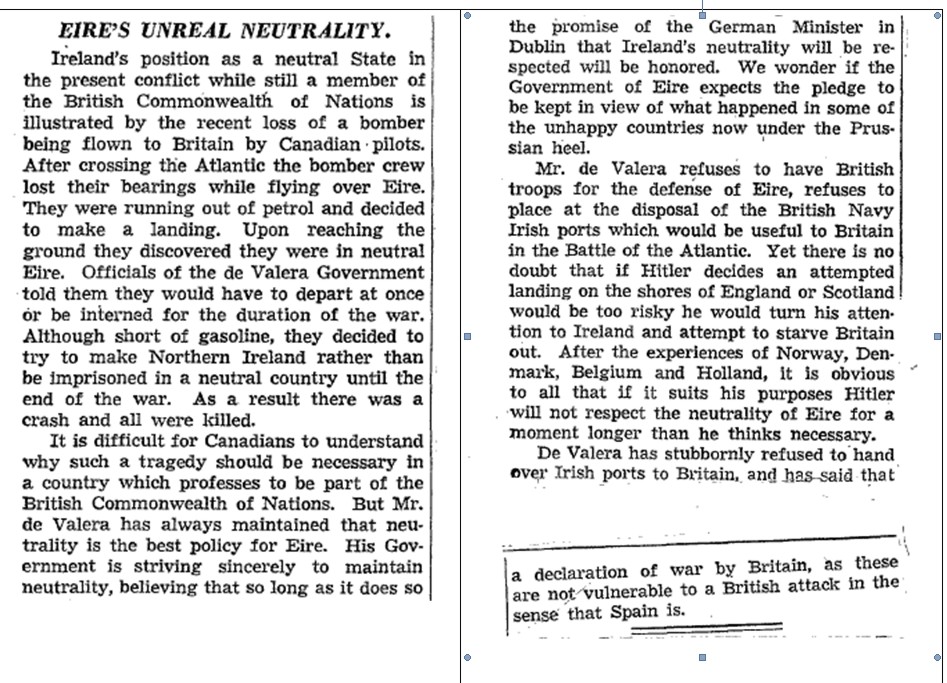
The Irish Government protested the wording of the article and
the Canadian High Commissioner based in Dublin accordingly
reported that the crew were “treated with every kindness”.
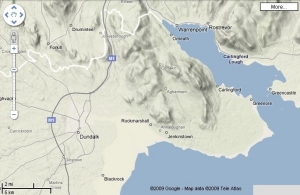
The mountains in this area would claim the destruction of two more aircraft before the war ended. An RAF Liberator crashed in April 1942 killing 16 men while a P-51 Mustang fighter of the US Army Air Forces crashed in September 1944 killing its pilot.
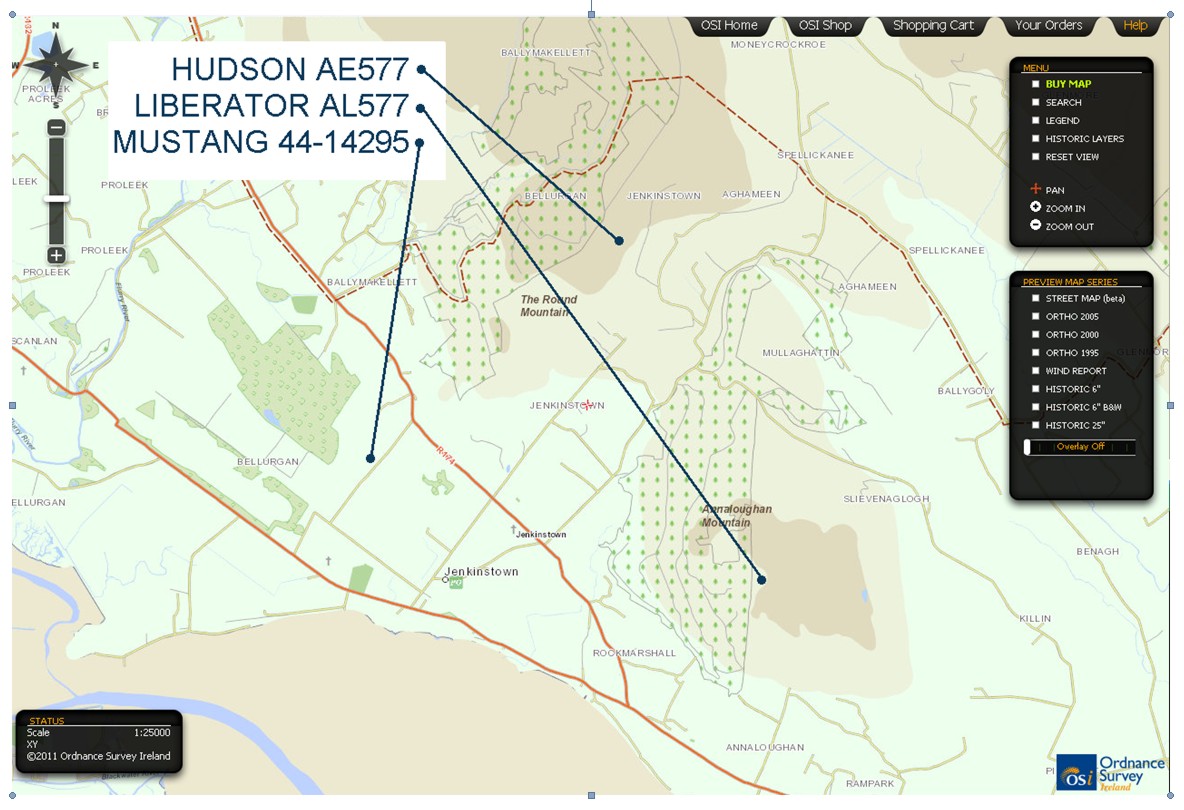
Sources:
- Yvonne Lay, cousin of Frederick J Goodwin
- Catherine K Levac, niece of Samuel R Kenny.
- Bill and Maureen Dubuc, nephew of L R Dubuc
- Irish Army Military archives
- Commonwealth War Graves Commission. - www.cwgc.org
- 'Ocean Bridge, The History of RAF Ferry Command' Carl A Christie. Toronto Press 1997.
- Martin Gleeson, Limerick
- Message forum: www.oldwarrenpointforum.com
- Genealogy Records: www.ancestry.com
- The Canadian War Museum's World War 2 Online Newspaper Archives - www.warmuseum.ca
- Royal Canadian Mounted Police Graves site: http://www.rcmpgraves.com/vetcorner/vetmonth-aug.html
- www.familysearch.org RCMP archives
